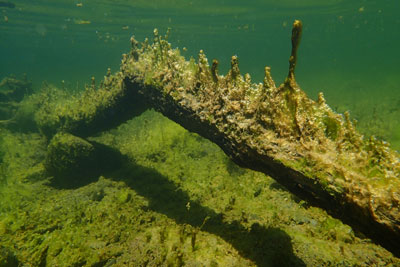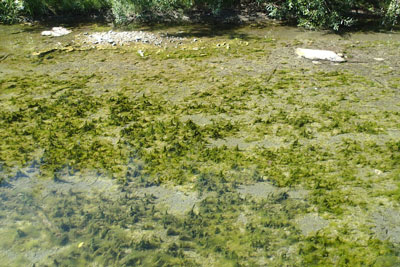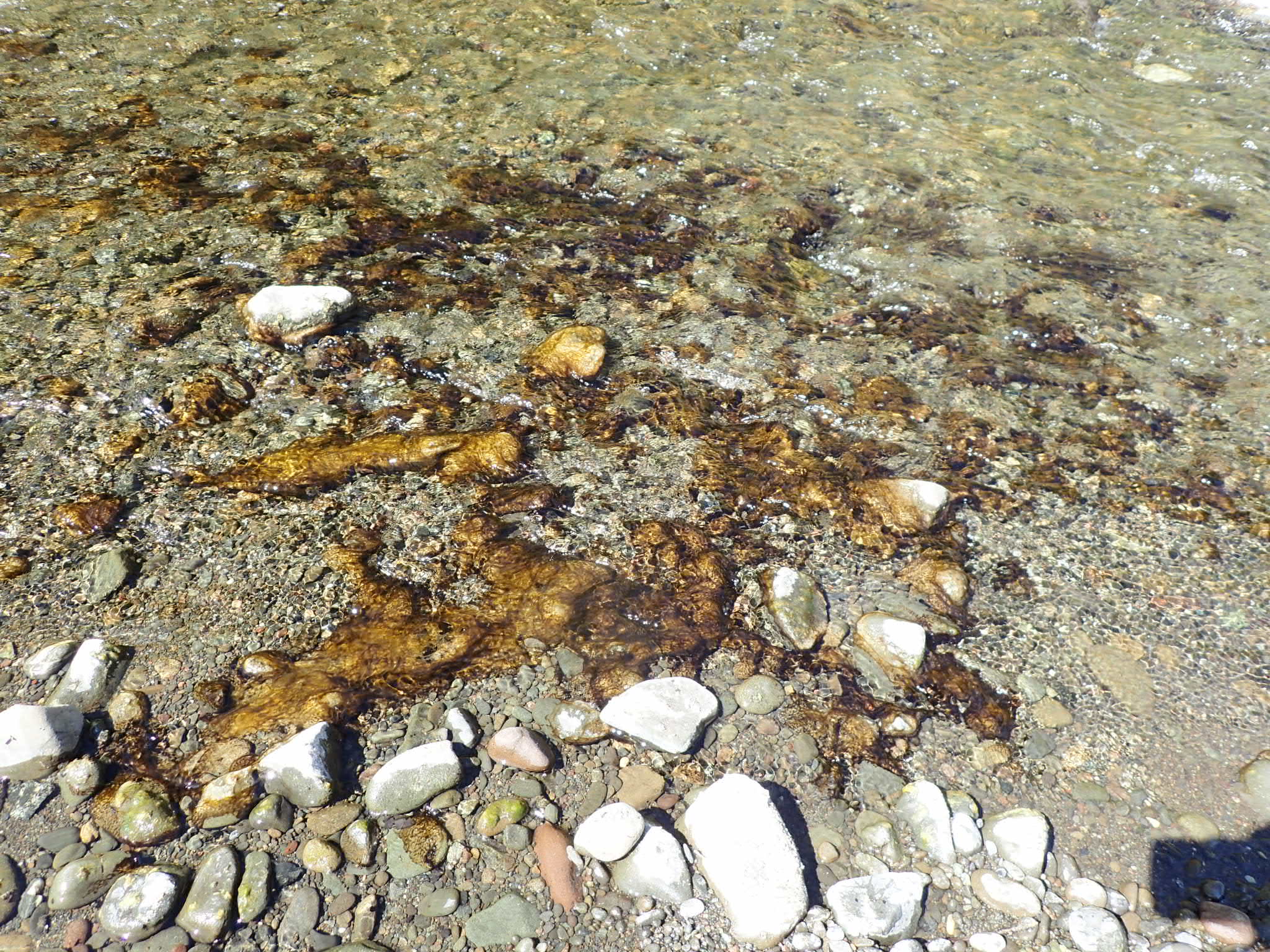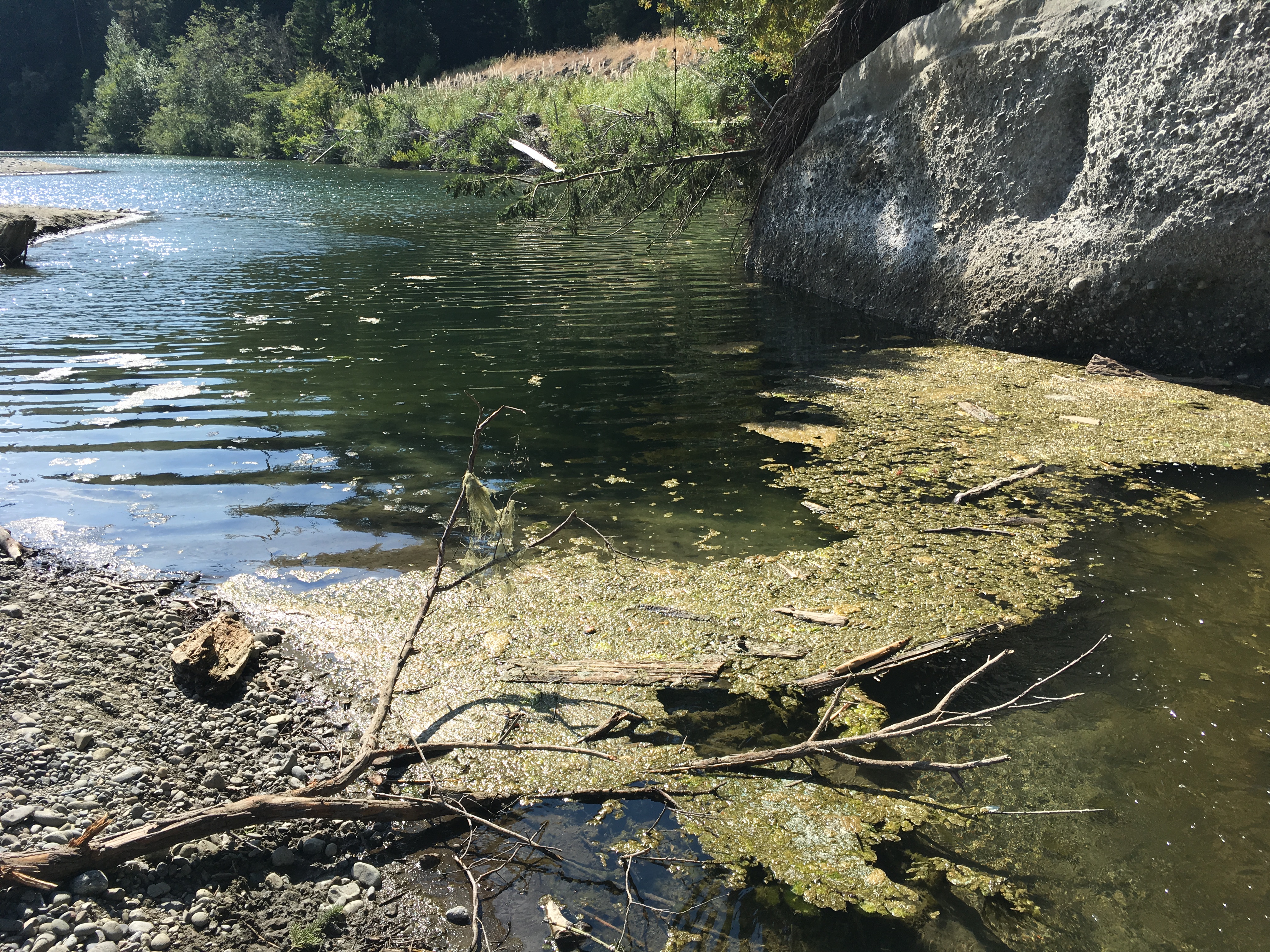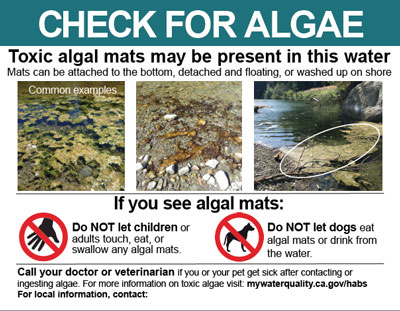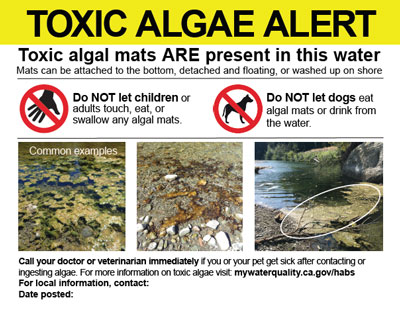FAQs for Toxic Algal Mats
- What are toxic algal mats?
- Toxins in algal mats
- What do mats look like?
- How to stay safe around toxic algal mats?
- Toxic algal mat advisory signs
- Algal mat advisory posting guidelines webpage
- Toxic algal mat printable brochure
What are toxic algal mats?
While harmful algal blooms (HABs) are caused by algae or cyanobacteria that grow suspended in the water column (planktonic), some algae grow attached to the bottom (benthic) and can form algal mats. Some species can produce toxins, and if present, can pose a risk to humans and pets. You can report observations of potentially toxic algal mats using the Bloom Report.
Where do algal mats grow?
Mats can grow in rivers and streams, or in reservoirs, lakes and ponds, and mats can look very different from algal blooms in the water column (Table 1). Mats grow attached to rocks, sand, cobbles, bedrock, or other plants attached to the bottom (benthic zone) of a water body (Figs. 1-3). Unlike blooms in the water column, the water can be clear when mats grow (Fig. 2-3). Mats can detach and float to the surface of the water (Fig. 4). Once at the surface, winds and current can transport the mats to other locations, and they may also get washed up and stranded on the shore. Therefore, floating or stranded mats can be present, even if no attached mats are visible under the water at that location.
Table 1. Summary of differences between algal mats and algal blooms
| Mats (benthic1) | Blooms (planktonic2) |
|---|---|
| Does not affect water clarity and can occur in clear water | Reduced water clarity as bloom density increases |
| Rivers and lakes; fast and slow flows | Predominantly lakes (few rivers); slow flows |
| Attached, floating, stranded on shore | Mixed in water column, floating scums |
| May not be visible from shore | Dense blooms visible from shore |
| Mats contain many algal species | Blooms contain few algal species |
1 The benthic zone is the bottom part of a river, lake, or pond.
2 Planktonic refers to algae that live suspended in the water column.
Toxins in algal mats
Not all algae produce toxins and many different species can grow within an algal mat. Only tests can determine if toxins are present within a mat. Visual inspections are unreliable. Children and dogs are most at risk from toxins, because they are more likely to swallow mat material, where almost all the toxins reside. Additionally, contact with mat material can cause skin irritation or rashes.
What do mats look like?
With many different algal species forming algal mats and multiple species often inhabiting a single mat, it can be difficult to visually determine if toxin producing species are present in a mat. Mats can be many different colors ranging from bright green, dark green, blue-green, orange, brown, maroon and more. For more images of HABs and algal mats see the visual identification factsheet and visual identification guide. When in doubt, avoid touching algal mats.
How to stay safe around toxic algal mats?
- Avoid areas with algal mats, either attached, floating, or stranded on the shore
- Do not ingest any algal mat material or swallow water that contains algal mat material
- Do not let children play with or handle mat material
- Do not let dogs in water with algal mat material or near stranded mats
- Rinse off any material on a dog’s fur with clean water and ensure they do not lick off any algal mat material
- Practice healthy water habits
Toxic algal mat advisory signs
The CCHAB Network has two signs to help the public stay safe around toxic algal mats. For waterbody managers or agency staff needing guidance on how to post signs or issue advisories, please visit our algal mat Benthic Posting guidance. For questions about the algal mat signs, email cyanoHAB.reports@waterboards.ca.gov.
The general awareness sign is suitable for locations where potentially toxic algal mats are suspected to occur. There may not be any mats when you visit this site, and this sign advises visitors to check the location to determine if mats are present. If you see algal mats, then follow the advisories and make sure no children, dogs, or adults touch or ingest any mat material.
When trained staff have confirmed the presence of potentially toxic algal mats at a site, then the Toxic Algae Alert sign can be posted. If you see this sign posted, be sure to avoid any algal mats and follow the advisories on the sign.


